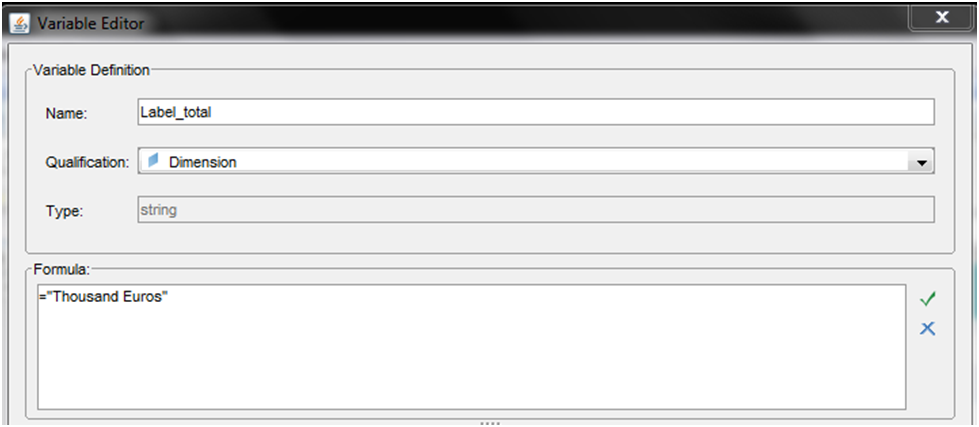Creating Web Intelligence reports is not the most challenging task for a BusinessObjects consultant, but it can be very time-consuming. Imagine your client asks you to create one document with 50 reports, and he's not sure yet how the reports should look. How can you create all these reports and at the same time make sure that they're easy to update?
Esa es de hecho una pregunta muy importante. Imagine que ya ha creado los informes 50, uno en cada pestaña, y su cliente de repente decide que la etiqueta de los totales no debe ser "Total (1000 EUR)" sino más bien "Miles de euros". Y en lugar de este fondo gris que decidió utilizar de forma predeterminada, al cliente le gustaría tener su azul corporativo.
¿Qué sucederá si no lo pensaste (o leíste este artículo) antes? Terminará cambiando los informes 50 uno por uno. Ok, no debería tomar más de 60 o incluso 30 minutos, pero probablemente tengas un mejor uso de tu tiempo, ¿verdad?
As que echemos un vistazo a algunos consejos:
- Use variables. The variables are not only quite useful for creating new measures, they're also great as labels. If you had created a variable Label_total (as a dimension) with the value "Total (1000 EUR)" and written in each total name cell "=[Label_total]", then the change would be quite easy. Just edit the variable and there you are! The label is now correct on your 50 reports.
- Use alerters. Alerters are like "conditional formatting" in Excel. Define a condition, a format, and if the condition is met, then the cell with the alerter will be formatted. This is necessary when you really need formatting to depend on a condition, but it's also a useful tool for easy maintenance. For the condition, choose something always true (for example create a variable always equal to 1, and define the condition in the sub-alerter as "Is this variable equal to 1"). For the formatting, just choose how you want the cell to look (for example with the grey background). Apply this alerter to all cells which should have this background. Now, if you need to change the color, you only need to change the alerter, not all the cells in the 50 reports! Note that unlike in Excel you can also put text in the formatting. So you can actually also use alerters for labels; the downside being that you lose in clarity (you can have something written in the cell's formula and something else displayed because of the alerter).
Esperemos que esta publicación le haya proporcionado algunos consejos para ahorrar tiempo para sus informes WebI que también lo ayudarán a mantenerlos y actualizarlos fácilmente. Si tiene otros consejos de WebI para compartir, ¡no dude en dejar un comentario a continuación!


